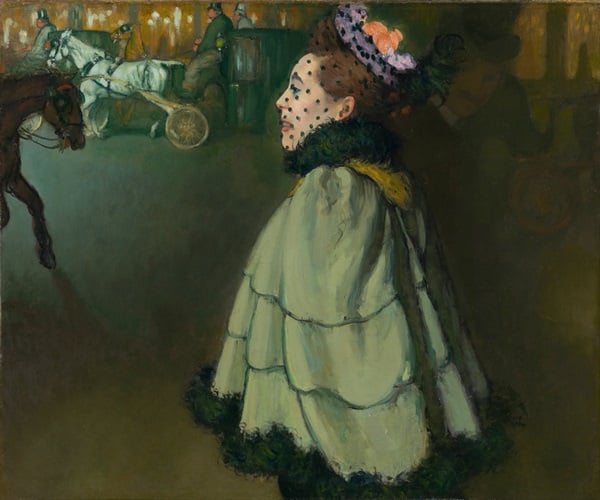
Image: Courtesy of www.musee-orsay.fr.
Like it or not, prostitution has played a key role in art history. What is perhaps Pablo Picasso’s defining masterpiece, Les Demoiselles d’Avignon, depicts women in a brothel. Édouard Manet’s seminal painting Olympia shows a prostitute reclining on a chaise, boldly staring at the viewer, who assumes the position of her client.
But some French critics are skeptical about the motives behind the exhibition “Splendor and Misery: Pictures of Prostitution, 1850-1910,” on view at Paris’s Musée d’Orsay through January 2016.
The exhibition’s opening had been briefly delayed by a strike over plans to keep the museum open seven days a week.
According to the Independent, comments in the official guest book indicate that visitors are “ecstatic.” One even gushes, in English, in explicit terms: “This is an orgasmic exhibition which will go down in the anals [sic] of art history.” Paris’ Office of Tourism cites that 91% of visitors claim that “visiting museums and monuments” is one of the main reasons for their stay.
But critics have lined up to denounce the show, some suggesting that it’s all about box office.
“Everyone knows that cultural budgets are being constantly nibbled away,” writes Philippe Dagen, according to the Independent, “but is it really necessary to solicit visitors by showing naked women in lascivious poses and naked men exhibiting their genitals?”
Reutlinger, La Belle Otéro (1875-1917).
Photo: Department of Prints and Photographs, Bibliothèque Nationale de France, Paris.
Harry Bellet, in Le Monde, compares the museum to a cash-strapped art-house movie theater showing smut to cover its financial losses on more high-minded screenings. He asks, “Is that the point we have now reached with big art exhibitions?”
Bellet is referring in part to a string of raunchy shows at the museum. One was devoted to the Marquis de Sade and was even promoted with a video showing an orgy. And the museum seemingly just can’t escape the sexy: performance artist Deborah de Robertis hit the Orsay with a performance of Gustave Courbet’s explicit painting, The Origin of the World.
The museum dismisses the criticisms, pointing out that so many artists took on the subject as to make it central to the history of art. Organized buy the quartet of in-house curators Marie Robert and Isole Pludermacher, along with Edinburgh University art historian Richard Thomson and Nienke Bakker, curator at Amsterdam’s Van Gogh Museum, the show also calls on the expertise of set designer and art director Robert Carsen for “scenography.”
In what may be a veiled criticism, the museum administration may even be suggesting that the critics are juvenile. A warning on the museum’s website reads, “Please note that some of the pieces presented in the exhibition may be shocking to some visitors (particularly children).”
After its run in Paris, the show heads to the Van Gogh Museum.